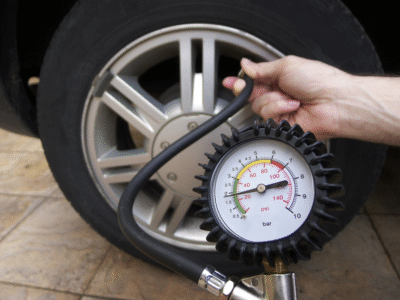
Mitsubishi Mirage Front Brake Pads Replacement Guide (2012–2016)

Maintaining the braking system of your Mitsubishi Mirage is vital for safety and performance. In this detailed guide, we walk through how to replace the front brake pads on the 6th generation Mitsubishi Mirage (2012–2016) and compatible models. Our comprehensive tutorial also covers cleaning, lubrication, torque specs, and safety checks to ensure a flawless brake service.
- Tools and Equipment Needed
- Compatible Brake Pad Part Numbers
- Preparation and Safety Steps
- Removing the Wheel
- Accessing the Brake Caliper
- Removing the Old Brake Pads
- Compressing the Caliper Piston
- Cleaning and Inspection
- Installing the New Brake Pads
- Lubricating the Caliper Pins
- Reassembling the Caliper
- Reinstalling the Wheel
- Tightening the Lug Nuts to Proper Torque
- Brake System Bleeding (Optional)
- Final Checks and Road Test
- Tips for Bedding in New Brake Pads
- Common Brake Issues and Troubleshooting
- Maintenance Schedule Recommendation
- Conclusion
- FAQs
Tools and Equipment Needed
Before starting, ensure you have all required tools ready for a smooth process:
- Floor jack and two jack stands
- Lug wrench or tire iron
- 14mm socket and 3/8" ratchet
- Plastic trim removal tool (for hub caps)
- “C” or “F” clamp
- Tube of brake caliper grease
- Brake parts cleaner
- Torque wrench (72 lb-ft range)
- Optional: bungee cord for hanging caliper
Compatible Brake Pad Part Numbers
A few replacement front brake pad sets that fit 2012–2016 Mitsubishi Mirage models include:
- TRW TPC1731
- Power Stop 16-1731
- Centric 105.17310
Always double-check part compatibility for your specific year and trim before purchase.
Preparation and Safety Steps
- Engage the parking brake and ensure the vehicle is parked on level ground.
- Chock both rear wheels securely to prevent movement.
- Slightly loosen the front lug nuts (do not remove them yet).
- Use the floor jack to raise the front of the vehicle and secure with jack stands.
- For safety, work on one side at a time—keeping three tires on the ground stabilizes the car.
Removing the Wheel
- Pry off the hub cap using a trim removal tool.
- Spin off the loosened lug nuts and remove the front wheel.
- Set both the wheel and nuts aside safely.
Once removed, you’ll see the brake rotor, caliper, and mounting bracket.
Accessing the Brake Caliper
- Locate the two 14mm caliper bolts at the rear of the caliper.
- Using your ratchet, loosen and remove both bolts.
- These bolts also function as slider pins, which will be cleaned and lubricated later.
- Carefully lift the caliper off the bracket. Suspend it with a bungee cord or rest it on the suspension.
Removing the Old Brake Pads
- Remove the inner brake pad from the bracket. The wear indicator tab (squeal bar) is typically positioned at the top.
- Pull the outer pad straight out from the caliper—it’s held by two metal spring clips.
Compressing the Caliper Piston
To install new pads, the caliper piston must be retracted:
You may be interested in reading Mitsubishi Mirage Timing Belt or Chain Guide (1985–2024)
Mitsubishi Mirage Timing Belt or Chain Guide (1985–2024)- Attach the “C” or “F” clamp over the caliper with an old brake pad placed between the piston and clamp head.
- Remove the brake fluid reservoir cap under the hood to release pressure.
- Slowly turn the clamp clockwise until the piston is flush with the rubber boot.
- Replace the reservoir cap to prevent contamination—brake fluid is hygroscopic and absorbs moisture.
Cleaning and Inspection
Use brake parts cleaner to thoroughly clean:
- Caliper assembly
- Bracket
- Rotor surface
- Lug nut studs
⚠️ Do not use compressed air or blow dust manually. Brake dust may contain asbestos or other harmful materials.
Inspect rotors for grooves, warping, or scoring. If they show wear or vibration during braking, consider resurfacing or replacing them.
Installing the New Brake Pads
- Insert the new inner brake pad into the bracket with the wear indicator bar positioned at the top.
- Fit the new outer pad into the caliper housing, securing it with its spring clips.
- Carefully lower the caliper assembly over the new pads and rotor.
Lubricating the Caliper Pins
- Apply a thin layer of brake lubricant to the smooth shank of the slider pins.
- Avoid getting grease on the threads or pad surfaces.
- Insert the slider pins through the caliper and into the bracket, turning counterclockwise a few threads by hand to prevent cross-threading.
Reassembling the Caliper
Tighten the caliper bolts securely using the 14mm socket and ratchet.
- Torque specification: 25–30 lb-ft
- Ensure both bolts are snug and the caliper moves smoothly on the pins.
Reinstalling the Wheel
- Position the wheel back onto the hub.
- Hand-tighten the four lug nuts in a star pattern.
- Lower the car carefully from the jack stands using the floor jack.
Tightening the Lug Nuts to Proper Torque
Once the car is resting on all four wheels:
- Tighten the lug nuts in a crisscross/star pattern to 72 lb-ft of torque (acceptable range: 65–79 lb-ft).
- Ensure all nuts are evenly tightened to prevent rotor warping.
Brake System Bleeding (Optional)
If the brake pedal feels soft or spongy, air may be trapped in the lines. Bleeding the brake system removes this air:
You may be interested in reading Mitsubishi Mirage Timing Belt or Chain Guide (1985–2024)
Mitsubishi Mirage Timing Belt or Chain Guide (1985–2024) What Kind of Oil Does a Mitsubishi Mirage Take? The Ultimate Guide
What Kind of Oil Does a Mitsubishi Mirage Take? The Ultimate Guide- Open the bleeder valve located on the caliper.
- Either use a helper to pump the brake pedal or a power bleeder tool.
- Replace with fresh DOT 3 or DOT 4 brake fluid as needed.
Final Checks and Road Test
- Sit in the driver’s seat and pump the brake pedal several times to restore pressure.
- Check the brake fluid reservoir and top off if necessary.
- Confirm that the pedal feels firm and responsive.
- Tap the hub cap firmly back into position.
Tips for Bedding in New Brake Pads
Proper bedding ensures smooth braking and optimal pad longevity:
- Drive normally for the first 300–500 miles.
- Avoid hard stops to prevent glazing.
- Perform several gradual stops from 30–40 mph to seat the pads evenly.
Common Brake Issues and Troubleshooting
| Symptom | Possible Cause | Solution |
|---|---|---|
| Squealing noises | Glazed pads or dust | Clean or replace pads |
| Pulsating pedal | Warped rotors | Resurface or replace rotors |
| Soft pedal | Air in lines | Bleed the brake system |
| Uneven pad wear | Sticking caliper pins | Clean and lubricate pins |
Maintenance Schedule Recommendation
- Inspect brake pads every 10,000–15,000 miles.
- Replace pads when thickness drops below 3mm.
- Flush brake fluid every 2 years to maintain hydraulic performance.
Conclusion
Replacing the front brake pads on a Mitsubishi Mirage (2012–2016) is a straightforward process that enhances safety and braking efficiency. By following these precise steps—cleaning components, using correct torque specs, and performing proper bedding—you’ll extend the lifespan of your brakes and maintain smooth stopping power.
FAQs
1. How often should I replace Mitsubishi Mirage brake pads?
Typically every 25,000–50,000 miles, depending on driving habits and pad material.
2. Can I reuse the old rotors?
Yes, if they’re smooth and within thickness limits. Otherwise, resurfacing or replacing is recommended.
3. What brake fluid type is best for the Mirage?
Use DOT 3 or DOT 4 brake fluid as specified in the owner’s manual.
4. Why is my brake pedal soft after pad replacement?
There may be air trapped in the brake lines—bleed the system to restore firmness.
 Mitsubishi Mirage Timing Belt or Chain Guide (1985–2024)
Mitsubishi Mirage Timing Belt or Chain Guide (1985–2024) What Kind of Oil Does a Mitsubishi Mirage Take? The Ultimate Guide
What Kind of Oil Does a Mitsubishi Mirage Take? The Ultimate Guide Mitsubishi Mirage Engine Oil Capacity and Type (All Years)
Mitsubishi Mirage Engine Oil Capacity and Type (All Years)5. Is it necessary to lubricate the caliper pins?
Absolutely. Lubrication ensures even pad wear and prevents caliper sticking.
If you want to know other articles similar to Mitsubishi Mirage Front Brake Pads Replacement Guide (2012–2016) you can visit the category Service and Parts.
Deja una respuesta






More content of your interest